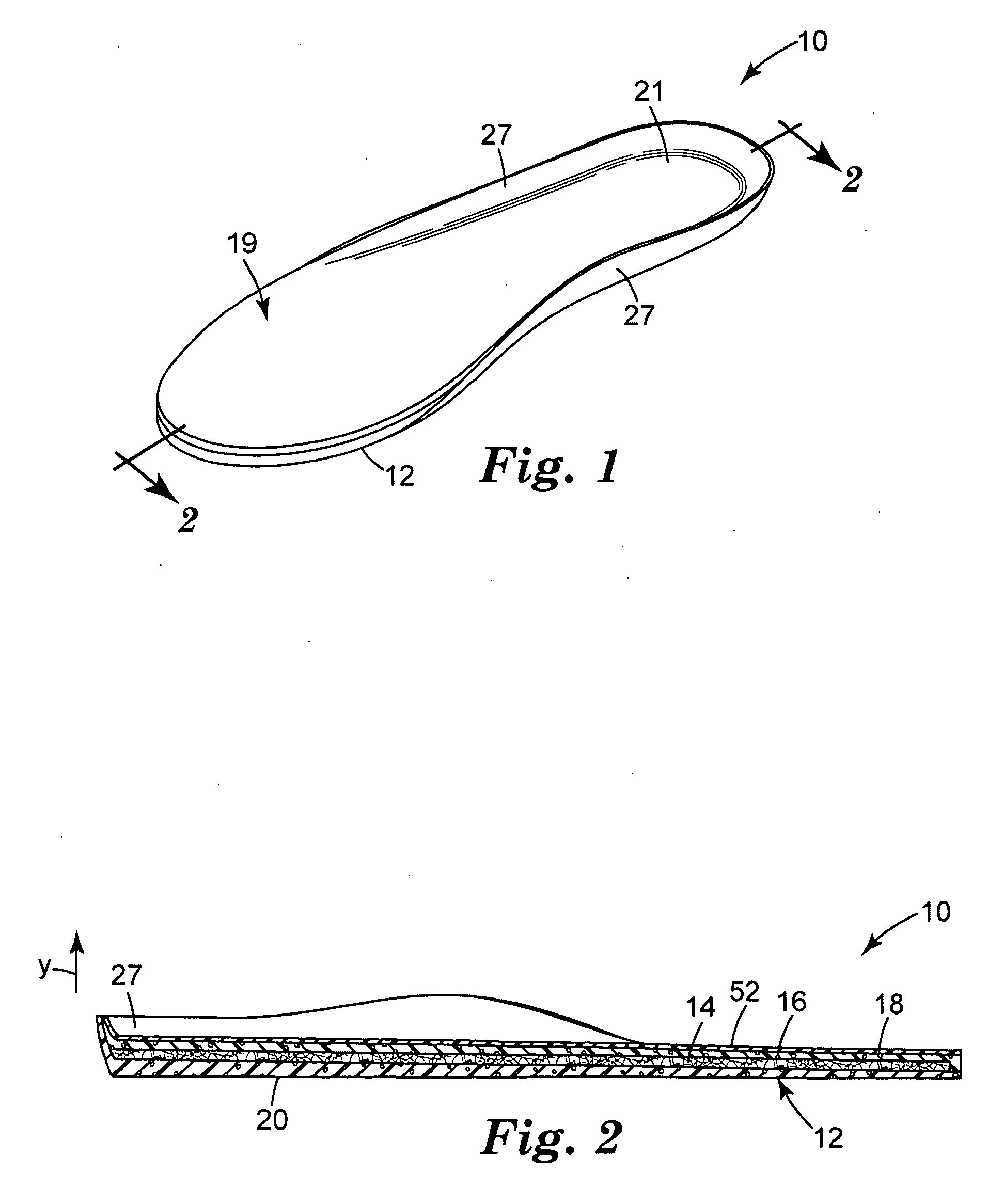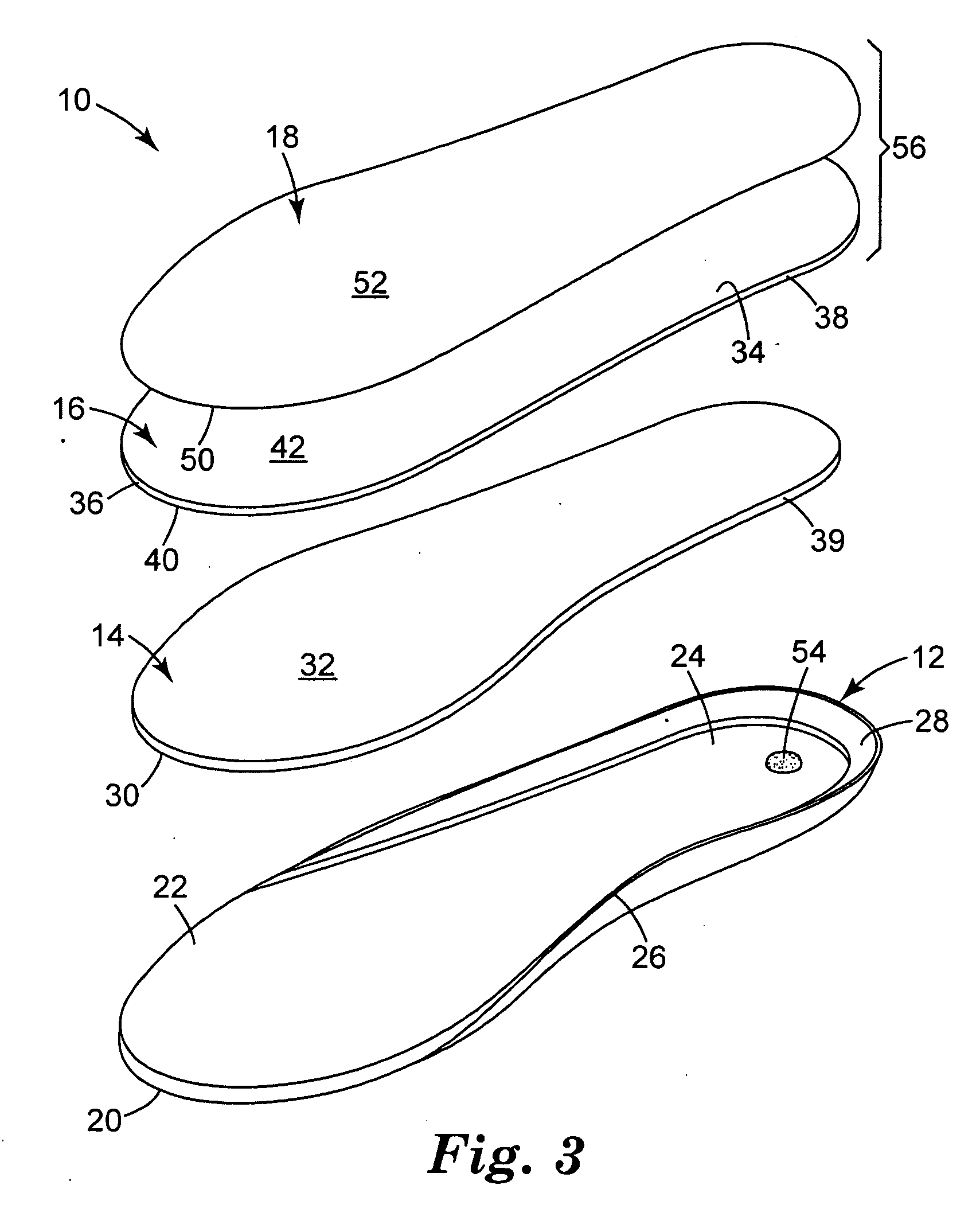Molded insulated shoe footbed and method of making an insulated footbed
- Summary
- Abstract
- Description
- Claims
- Application Information
AI Technical Summary
Benefits of technology
Problems solved by technology
Method used
Image
Examples
example 1
[0049]A pair of footbeds was constructed as follows. A thermoformable, open cell, polyurethane foam containing antimicrobial agent and red pigment was obtained from Kun Huang Enterprise Co, LTD in Taiwan under the trademarked Poliyou brand. The antimicrobial agent was Aegis Microbe Shield AEM 5772 available from Aegis Environments, Midland, Mich., USA. The foam was molded into the desired contoured shape. The thermoforming temperature was about 180 to 220° C., and the dwell was about 90 to 120 seconds. The forming was done in a steel mold. The resulting first surface of the foam took the decorative shape disclosed in design patent application Ser. No. 29 / 323,304 to Anderson et al. filed Aug. 22, 2008. The second surface of the foam had the shape shown in FIG. 3. The thickness of the shape-retaining layer was tapered from about 6 mm at the center of the heel-part to about 2 mm at the center of the fore-part. An adhesive dab was applied to the bottom of the heel cavity. The adhesive w...
PUM
| Property | Measurement | Unit |
|---|---|---|
| Temperature | aaaaa | aaaaa |
| Length | aaaaa | aaaaa |
| Thickness | aaaaa | aaaaa |
Abstract
Description
Claims
Application Information
 Login to View More
Login to View More - R&D
- Intellectual Property
- Life Sciences
- Materials
- Tech Scout
- Unparalleled Data Quality
- Higher Quality Content
- 60% Fewer Hallucinations
Browse by: Latest US Patents, China's latest patents, Technical Efficacy Thesaurus, Application Domain, Technology Topic, Popular Technical Reports.
© 2025 PatSnap. All rights reserved.Legal|Privacy policy|Modern Slavery Act Transparency Statement|Sitemap|About US| Contact US: help@patsnap.com



